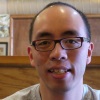- Let Children Get Bored Again
An article about parenting that I connect with a lot – just give your kids time to do nothing!Because things happen when you’re bored. Some of the most boring jobs I’ve had were also the most creative. Working at an import factory after school, I pasted photos of ugly Peruvian sweaters onto sales sheets. My hands became encrusted with glue as the sweaters blurred into a clumpy sameness. For some reason, everything smelled like molasses. My mind had no choice but to drift into an elaborate fantasy realm. It’s when you are bored that stories set in. Checking out groceries at the supermarket, I invented narratives around people’s purchases. The man buying eggplant and a six-pack of Bud at 9 p.m.: Which was the must-get item and which the impulse purchase? How did my former fifth-grade teacher feel about my observing her weekly purchase of Nutter Butters?
- When Kodak Accidentally Discovered A-Bomb Testing
An unexpected side effect of the atom bomb was that it ruined a special type of film for Kodak customers. Kodak went to investigate and discovered that something interesting was happening…While he was studying the Indiana samples, Webb got word that a particular production run of strawboard from a plant in Tama, Iowa was also contaminated and fogging the Kodak film it carried. While Tama was 450 miles from Vincennes, there were striking similarities. The two production runs of strawboard had been completed within a month of each other. Tama’s radioactive spots also failed the radium test, meaning the cause was something else. Most telling, however, was that both mills sat next to rivers, with Vincennes on the Wabash River and the Iowa River cutting through Tama.
- Meet the Exclusive Service Bringing Lunch to NYC’s Chinese Workforce
Not surprised this is happening given the cost of meals in NYC. Even “fast food” is pretty expensive and is probably of the same flavor that Chinese people want. Glad to see that even though I’m not well versed in the Chinese community, I can find out what the Chinese are doing.Most of the food is available for between $10 and $20, portioned for solo diners and with diverse offerings. On one day in early February, workers near 111 Wall St. got options from Midtown’s HK Kitchen and Kung Fu Kitchen. The former presented some 40 menu items to choose from while the latter had about 20. On the same day, customers near the Columbia Medical Center, where many Chinese students work and live, received food from Tang Gong Zhu, a Flushing-based spicy hot pot place.
It’s a boon for lovers of homey Chinese food in Midtown and FiDi, but it’s also been widely welcomed by restaurants. The new, captive audience means far more sales for the restaurants. Erbo Sun, the owner of Tang Gong Zhu, says that his restaurant does four to five YBB orders a week, with 60 to 70 orders on average per day. Since partnering with YBB to deliver beyond Flushing a year ago, the number of delivery orders has tripled.
- America’s Professional Elite: Wealthy, Successful and Miserable
This article resonates with me, especially every year after I attend CES. I lament the amount of money that is spent on things that are so frivolous.And finally, workers want to feel that their labors are meaningful. “You don’t have to be curing cancer,” says Barry Schwartz, a visiting professor of management at the University of California, Berkeley. We want to feel that we’re making the world better, even if it’s as small a matter as helping a shopper find the right product at the grocery store. “You can be a salesperson, or a toll collector, but if you see your goal as solving people’s problems, then each day presents 100 opportunities to improve someone’s life, and your satisfaction increases dramatically,” Schwartz says.
- Stepping Into the Uncanny, Unsettling World of Shen Yun
I’m glad that someone, somewhere out there, has decided to see Shen Yun and explain what it is. I haven’t seen it and don’t plan to see it (I saw a lot of Chinese arts when I was a kid), but at least now my curiosity has been satisfied.Aside from the organ harvesting, the homophobia, the anti-evolution ballad, and the Karl Marx apparition, the thing I found most odd about my Shen Yun experience in Houston was the hosts’ explanation of Chinese classical dance. This art form seemed to resemble both ballet and gymnastics, they said, but, they explained, ballet and gymnastics had in fact borrowed the traditional techniques of Chinese classical dance. The dancers were showcasing a tradition that was thousands of years old, they went on—a tradition that had been single-handedly rejuvenated by Shen Yun. It was impossible to see a show like this in China, because of the Communist regime, they told us.
In February, I called up Emily Wilcox, a professor of Chinese studies at the University of Michigan and the author of the book “Revolutionary Bodies: Chinese Dance and the Socialist Legacy.” “I studied Chinese classical dance at the Beijing Dance Academy for a year and a half,” she said, “and, a few weeks after I came back to Michigan, a group promoting Shen Yun came up to me at the mall, handed me a flyer, and gave me the whole spiel about how Chinese dance is banned in China. It was hilarious to me, and so ridiculous, and, in a way, it inspired me to write this history in my book.”
 Hi! and welcome to the eclectic personal blog of Kevin Quan. Come in, stay awhile, peek into the nooks & crannies, and learn a bit about me and my interests.
Hi! and welcome to the eclectic personal blog of Kevin Quan. Come in, stay awhile, peek into the nooks & crannies, and learn a bit about me and my interests.